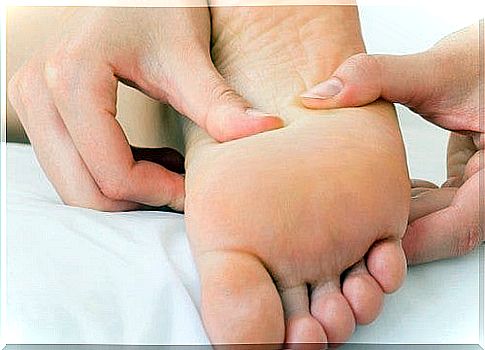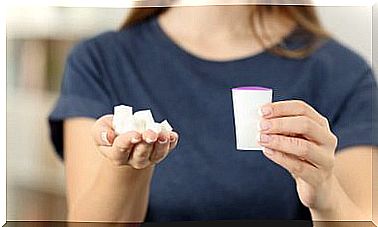Plantar Fasciitis: What Is It And How To Relieve It?
Plantar fasciitis is a type of injury that causes shooting pain when walking on the heel and therefore makes it difficult to perform various activities. The pain results from inflammation of the band of strong, fibrous tissue (the fascia) that connects the heel bone to the base of the toes.
The fascia cushions the impact on the foot when walking, jogging, running or performing an activity with strong and continuous support. Therefore, when it is injured, there is pain.
Some of the risk factors for plantar fasciitis are being overweight or a job in which you must spend several hours on your feet, among others. However, it is not an incurable problem and there are several methods to alleviate it. We can even change certain lifestyle habits to prevent it. Read on and find out how.
Symptoms of plantar fasciitis
The symptoms that show the presence of this condition are:
- Burning sensation or stabbing pain in the heel of the foot that can sometimes be very strong. They can occur throughout the day and ease a little or lessen with rest.
- Sometimes the pain can extend to the toes.
- You may notice swelling, redness in the heel area, and tenderness when putting pressure on the affected area.
The pain can appear when you get up or when you take your first steps around the house. Also, it can get worse if you spend too much time on your feet or if you exercise (but not during it).
How to get relief?
Plantar fasciitis is a relatively common disease that, according to an article published in the journal American Family Physician, affects about 1 million people each year. Fortunately, there are several ways to alleviate this condition, as is also included in the article itself:
Medicines
There are no specific medications for this disease, common painkillers such as ibuprofen or paracetamol are simply necessary. These can help reduce pain and inflammation caused by plantar fasciitis.
Ice

One of the easiest ways to get relief from plantar fasciitis is to place an ice pack wrapped in a thin cloth under the sole of your foot.
The foot is left to rest on the compress for about 15 minutes and the procedure is repeated as many times a day as necessary. This will help reduce inflammation and relieve pain.
Physiotherapy

To treat fasciitis, it is advisable to see a physical therapist. In addition to relieving pain during the session, the professional will teach you to perform exercises to stretch the plantar fascia and strengthen the muscles.
Since the pain is usually more intense during the first hours of the day, it is advisable to gently massage the soles of the feet with the thumb of the hand. Thus we will relax the area and “unload” it. To perform these massages you can also use a cylinder instead of your hands.
Footwear
It is recommended to wear appropriate footwear that covers the entire foot, fully supports it and has a suitable sole to protect the heel and sole of the foot. It is not recommended to wear very flat shoes or heels. In this sense, sneakers are the best option.
If necessary, the use of orthopedic inserts is recommended to reduce stress on the foot. However, these should always be recommended by a specialist.
Other procedures to relieve plantar fasciitis
In very serious cases and if, after months of treatments, the problem does not disappear or is reduced, it is possible that the doctor will recommend other treatments. Among them we find injections or surgery to separate the plantar fascia from the heel bone.
How to avoid plantar fasciitis?

The following recommendations help you avoid this condition or reduce the risk of increasing pain:
- Maintain a healthy weight. Being overweight puts more pressure on the foot as demonstrated in an article published in the International Journal of Obesity .
- Avoid standing for a long time without moving.
- Wear suitable footwear that is neither too flat nor high.
- Avoid shoes with a very thin sole and that do not provide adequate protection for the sole of the foot.
- When doing physical activity, alternate exercises that require effort on the feet with activities that allow them to relax.
- If you run, try to run on surfaces that are softer than asphalt, such as grass or training tracks. And it is that these surfaces cushion the impact on the feet, as shown by various studies.
Take care of your feet. They have to support you for life, and sometimes we don’t give them all the care they need. Always remember to go to your doctor for any discomfort.









